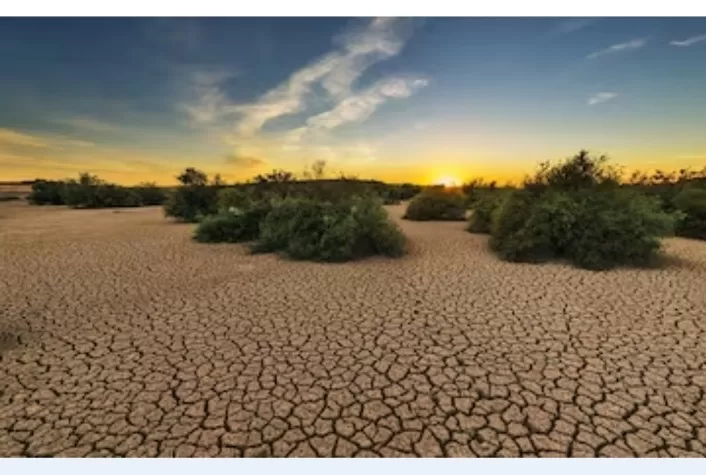As the world grapples with the ominous impacts of climate change, temperature records are being shattered across the Asian continent, serving as irrefutable evidence of the planet’s relentless march towards environmental crisis.
In India, the globe’s most populous nation, authorities have declared that August 2023 stands as the hottest and driest August since the inception of national meteorological records more than a century ago.
Remarkably, this sultry surge in temperatures has occurred within the context of India’s annual monsoon season, a period historically characterized by abundant rainfall, responsible for delivering up to 80 percent of the country’s yearly precipitation.
However, despite sporadic, devastating floods afflicting the northern regions earlier in August, the overall rainfall has plunged far below the historical average. The India Meteorological Department (IMD) reports that August witnessed a mere 161.7 millimeters of rainfall, a staggering 30.1 mm lower than the prior August record set in 2005.
This meteorological imbalance has left the nation languishing in relentless heat. The IMD identifies the primary catalyst for this condition as the substantial rainfall deficiency coupled with a weakened monsoon.
In parallel developments, Japanese authorities have also disclosed that the nation recently weathered its hottest summer since records were first documented in 1898. Temperatures spanning from June to August soared “considerably higher” than the norm across the northern, eastern, and western regions of Japan. These soaring temperatures have not only affected daytime highs but have also raised nocturnal temperatures to unprecedented levels.
Australia has not been spared from this relentless warming trend, as it witnessed the warmest winter on record. The Bureau of Meteorology confirms an average winter temperature of 16.75 degrees Celsius, a mere fraction above the previous record established in 1996. This climatic milestone represents the highest average winter temperature documented since Australia’s meteorological records were initiated in 1910.
This crescendo in heat extremes stands as a harrowing testament to the realities of climate change. Climate scientists have long cautioned that global warming begets heatwaves that are not only hotter but also more enduring and recurrent. Adding to this foreboding outlook is the looming El Niño weather pattern, poised to exacerbate the already torrid conditions. Although its effects may become more pronounced in the latter part of the year as it intensifies, the implications for extreme heat are disconcerting.
Heatwaves are amongst the most lethal natural phenomena, annually claiming hundreds of thousands of lives due to preventable heat-related ailments. In affluent nations, innovations such as air conditioning can offer respite from the oppressive heat. Nevertheless, even in prosperous Japan, authorities report a grim tally of at least 53 fatalities resulting from heatstroke in July, with nearly 50,000 individuals necessitating emergency medical intervention.
It is worth noting that the adverse effects of extreme heat disproportionately affect the vulnerable, including infants, the elderly, and outdoor laborers. Profound health risks arise even in scenarios far from the lethal threshold. As experts stress, heat doesn’t need to reach catastrophic levels to exact a deadly toll
John Nairn, a distinguished senior extreme heat advisor at the United Nations’ World Meteorological Organization (WMO), emphasized in an interview last month that heatwaves are “increasingly perilous.” He underscored that this peril is emerging as the most rapidly advancing consequence of global warming. Nairn issued a stark warning, stating, “People are far too complacent about the warning signs. It will only intensify and become more frequent.”
Source AFP




